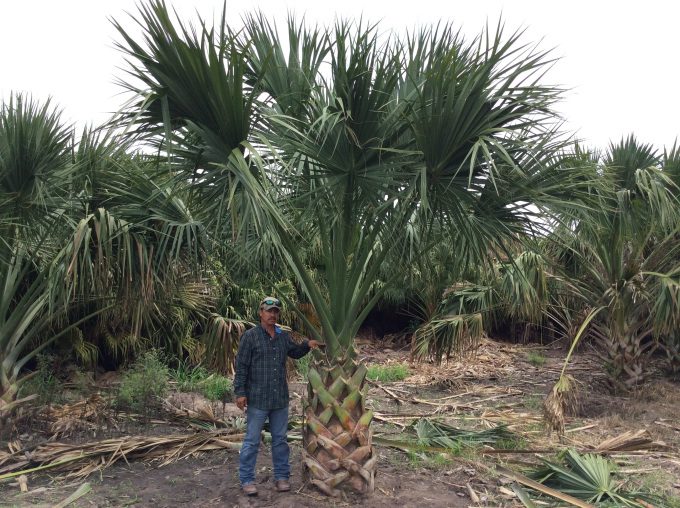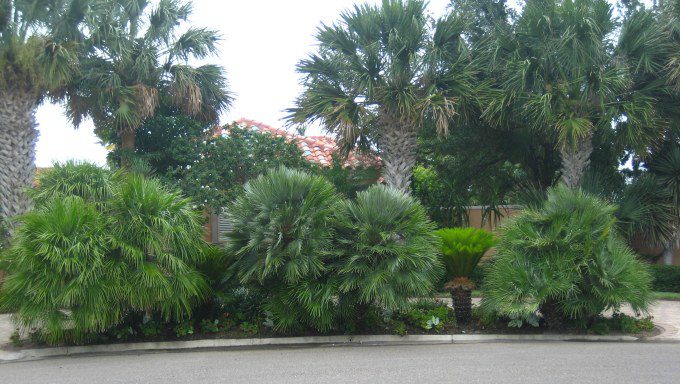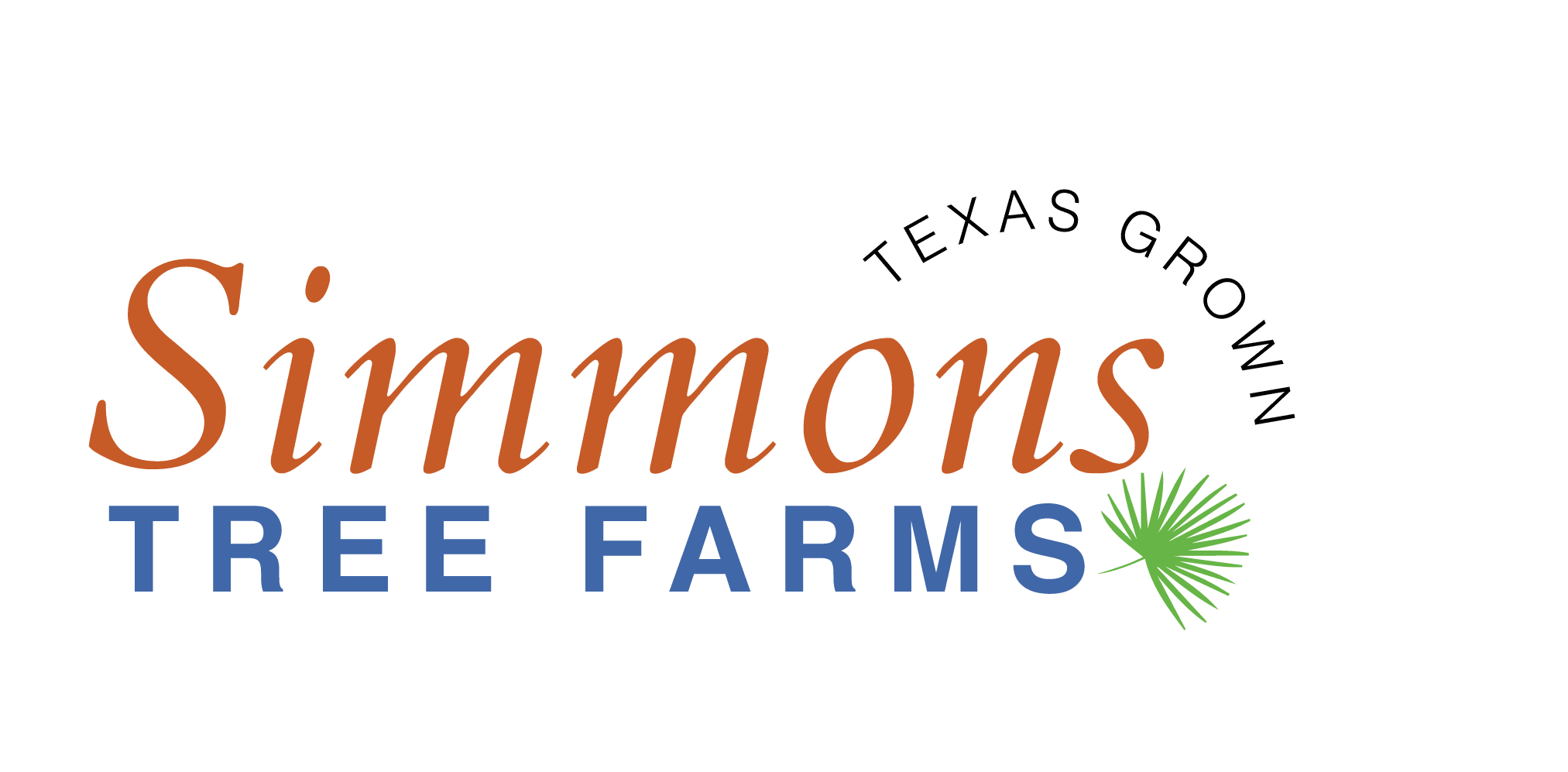Texas Sabal is the one palm native to the Rio Grande Valley. Twenty years ago, the last large native stand was in Brownsville but they are making a come-back. Large specimens can be seen in many of the brushlines and native brush. It looks similar to Florida’s cabbage palm but with a stockier trunk. The leaf margins (or boots) tend to remain on the trunk for many years giving it a cross -hatch design. At harvest, all but the youngest set of fronds are removed.

When sabals sprout and for the first few years, they look like green spikes sticking up out of the ground. They only put out one or two sets of fronds in a growing season so it does take some time for this palm to attain a lush look after being transplanted. (When they are dug to be moved, almost all the fronds are removed. The ones that remain are cut in two to reduce stress on the tree)
Parrots and orioles often choose an untrimmed sabal to nest in. They’re a super-tough tree – tolerant of heavy winds, salt, drought, and most soil types. Use it as a street or parkinglot tree, in a grouping, or as a focal point. Texas sabals may be native to south Texas but they are cold hardy through north Texas. We have reports of them surviving single digit temperatures in the Dallas-Fort Worth metroplex.

Great curb appeal and easy care – seems like a no-brainer to me. . . . Texas Sabal is a wonderful addition to almost any landscape!

When I move to Padre, your my landscape architect. I want lots of palm trees! Lots!